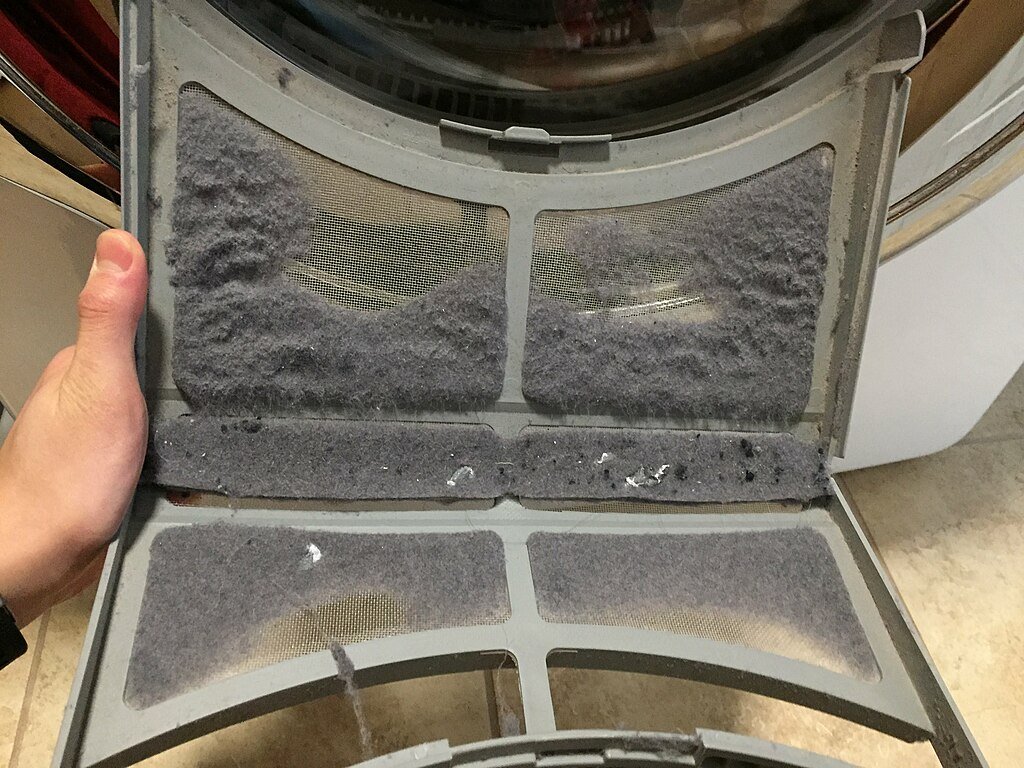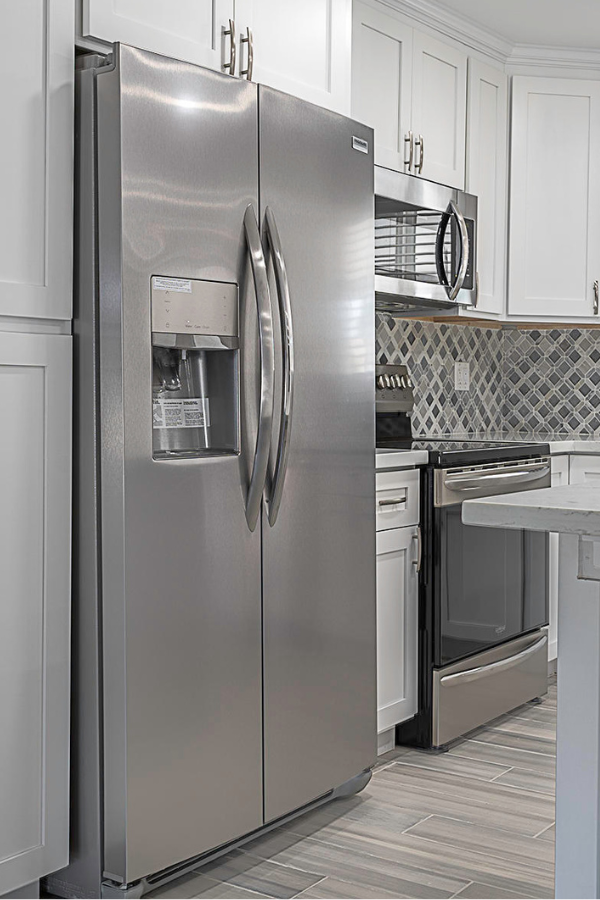Discover Effective and Environmentally Friendly Techniques for Keeping Your Appliances Spotless
Maintaining clean appliances is essential not only for the long life of your appliances but also for the well-being of your home. However, the conventional cleaning products often used can have a detrimental impact on both our appliances and the planet. In this guide, we'll explore the importance of adopting eco-friendly cleaning methods for your appliances and provide practical tips for incorporating natural alternatives into your cleaning routine. We’ll go room by room with you, looking at how best to clean your appliances and what to look out for while doing so.
Kitchen:
Refrigerator:
Your refrigerator can get awfully messy. Things leak and drip between shelves. Containers get tipped over and food spills, and do you lose it behind other items. Your children sometimes decide to hide science experiments without telling you. And that is without considering food that's just gone off. All of that comes together and can make a horrible smell. So you need some ways that will really get it clean.
To start with, no matter how tempting it is, don't take everything out of the refrigerator. Instead, go one shelf at a time starting at the bottom. Make sure to thoroughly dry each shelf before moving on to the next so that you don't leave the cleaning solution in place.
What about particularly stubborn stains though? That is when our baking soda scrub comes in. Gunked on food, dried up spills, anything that's caked on there or particularly smelly, can be combated with baking soda. Grab your sponge and use it to give a good scrub to the interior of the refrigerator. (The baking soda works to neutralize the smells within your refrigerator through chemical reactions, which is why you're scrubbing with it instead of just leaving a box with a small corner opened.)
All-Purpose Cleaner:
Recipe: Mix equal parts white vinegar and water in a spray bottle. Use it to wipe down the interior and exterior surfaces of the refrigerator. Vinegar effectively eliminates odors and kills most bacteria.
Deodorize with Baking Soda:
Sprinkle baking soda on a damp sponge and use it to scrub the interior of the refrigerator. Baking soda helps to absorb odors, leaving the refrigerator smelling fresh.
Stainless Steel Cleaner:
Recipe: Mix olive oil and white vinegar in a 2:1 ratio. Apply the mixture to a soft cloth and use it to buff stainless steel surfaces, leaving them clean and streak-free.
Dishwasher:
When it comes to your dishwasher there are two major issues that can be solved by cleaning. The first is smell from mold or mildew. The second is scale from minerals in your water. Fortunately, both are relatively easy to solve, using white vinegar and baking soda.
Lemon Fresh:
Recipe: Place a cup of white vinegar in a dishwasher-safe container on the top rack of the empty dishwasher. Run a hot water cycle with the dishwasher empty except for the container of vinegar. Then, sprinkle baking soda on the bottom of the dishwasher and run another hot water cycle to remove stains and odors.
Eco-Friendly Descaler:
Recipe: Mix equal parts white vinegar and water. Use this solution to wipe down the interior of the dishwasher, paying special attention to the door seals and any nooks where grime can accumulate.
Oven:
If you've ever had something fall off on the cookie sheet or Pyrex dish, only to get stuck to the bottom or side of your oven and burned on you know how hard it is to get your oven clean. We've mentioned before how self-clean modes can be dangerous. Sometimes, though you don't have the option for a steam-cleaned oven, built-in. Fortunately, it's easy to set that up yourself.
Baking Soda Scrub:
Recipe: Mix baking soda with a small amount of water to form a paste. Apply the paste to the interior of the oven, avoiding the heating elements. Let it sit for a few hours or overnight, then scrub and wipe clean with a damp cloth. Don't scrub too hard though as you don't want to scratch the coating of your oven. Before trying this method, research what type of coating you have.
Steam Cleaning:
Fill an oven-safe dish with water and add a few slices of lemon. Place it in the oven and bake at a high temperature for about 30 minutes. The steam will help to loosen food particles, making them easier to wipe away.
Microwave:
After your refrigerator, your microwave is usually the easiest, if most time consuming appliance to clean. Just like with the oven, we're going to use steam and vinegar to start working at any buildup. The lemon water steam will help with loosening dried on food, but doing a vinegar steam after will ensure that the microwave is disinfected after.
Lemon Steam Clean:
Recipe: Fill a microwave-safe bowl with water and add a few lemon slices. Microwave on high for three minutes, then let it sit for five minutes. The steam will loosen dried-on food, making it easy to wipe away.
Vinegar All-Purpose Cleaner:
Recipe: Mix equal parts white vinegar and water in a microwave-safe bowl. Microwave on high for two minutes. The vinegar steam will help to loosen food and deodorize the microwave.
Laundry Room:
Washing Machine:
There are many nooks and crannies where ick can build up in your washer. This means that anything you use needs to be safe to run through the whole system.
Vinegar Wash:
Pour two cups of white vinegar into the washing machine and run a hot water cycle. Vinegar will help to eliminate mold, mildew, and soap scum buildup.
Baking Soda Scrub:
Mix baking soda with water to form a paste. Use this paste to scrub the rubber door seal and other areas prone to mold and mildew. Rinse with a damp cloth.
Dryer:
Lint Trap Cleaning:
If you feel that there's too much buildup in your trap, even after scraping everything out, there are ways to get it clean. Remove the lint trap and wash it with warm, soapy water. Use an old toothbrush to remove any stubborn lint residue. Rinse and dry thoroughly before replacing it.
Vinegar Fabric Softener:
Instead of chemical-laden fabric softeners, add a half-cup of white vinegar to the rinse cycle. Vinegar naturally softens fabrics and helps to eliminate static cling.
Incorporating eco-friendly cleaning methods into your home maintenance routine not only promotes a healthier home but also reduces your carbon footprint. By opting for natural alternatives like white vinegar, baking soda, and lemon, you can effectively clean your appliances without harming the planet. Take the step to implement these green cleaning practices and enjoy the benefits of a clean, sustainable home.
If you need assistance with appliance repair or maintenance, don't hesitate to reach out to us at Appliance Rescue Service. Our team of experts is here to help you keep your appliances running smoothly while preserving the planet for future generations. Let's work together towards a cleaner, greener world.
Website
Office ((214) 599-0055)
Additional Reading
Don't Overlook Your Ice Maker: The Benefits of Regular Cleaning
Taking the Pain Out Of Melted Plastic
Why Is My Oven Smelling So Strange?














